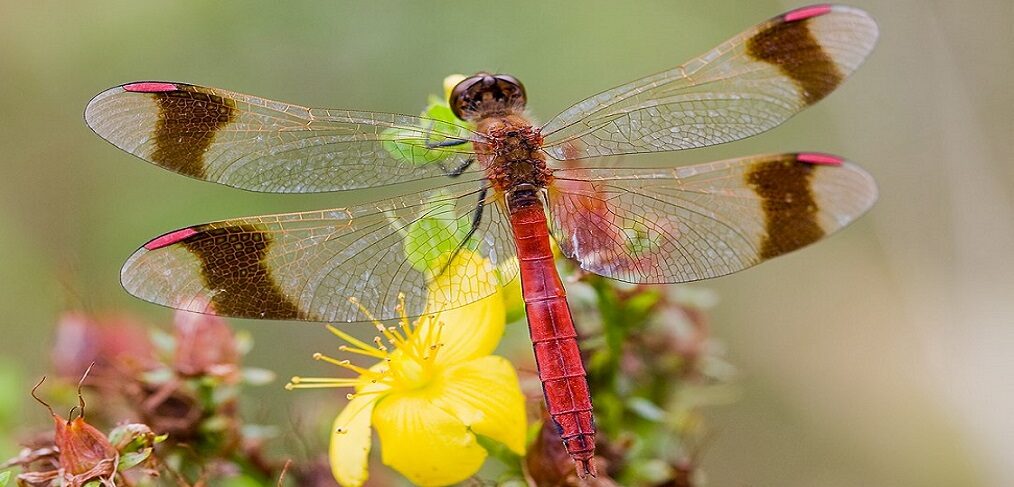
species of the week #22 – bandet darter dragonfly
The banded darter dragonfly is a rather small dragonfly with a maximum body length of 35 mm and a broad brown wing band. The wing drawing provides an optical flicker effect in flight with a resolution of the contours. The low-flying animals are therefore difficult to spot. Despite their striking body colour they are surprisingly well camouflaged in the vegetation. This makes it the perfect hide hunter, which can grab its prey in a flash from the camouflage.
| Distribution status | extremely rare |
| Remaining deposits | oxbow lakes and sand pits on the Moselle |
| Last sighting in Rhineland-Palatinate | 1994 in Wittlich |
| Habitat | Nutrient-rich standing waters such as bogs, ponds, gravel, clay and sand pits. |
| Threat | Intensive keeping of ditches free, missing water margins, climate change |
The banded darter dragonfly lives mainly on shallow, moderately silted, partly weedy, sunny and wind-protected waters, such as drainage ditches, ponds in gravel pits, boggy ponds, oxbow lakes, oxbow lakes and floodplains.
Intensive care and maintenance measures at ditches and their surroundings can considerably impair the populations of the banded damselfly, such as annual weeding and the radical mowing of perennial fields on ditch embankments. Waters that are too silted up are also unsuitable. In addition, climate change is responsible for an increasing drying up of habitats; permanently poor water quality is causing a decline in food supply. While the species has spread in the North (East) German lowlands in recent decades, the population in Southern Germany is declining sharply.
Politically necessary:
– Conservation of wetlands
– Area-wide designation and maintenance of watercourses
– Limiting climate change
– Measures to achieve good ecological status for all water body types
Picture: By Loz (L. B. Tettenborn) – Own work, CC BY-SA 3.0, https://commons.wikimedia.org/w/index.php?curid=8932693
